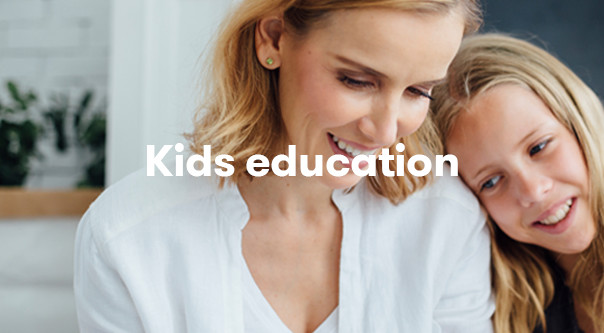Covering the cost of your kids’ education

Education is expensive. Particularly if we’re talking secondary school and university.
Everyone wants the best for children – that’s a given. Invariably, though, it comes at a cost, and I’m not just talking outright dollar value. There are often implications on family lifestyle and, more pertinently, retirement.
Let’s say you’re in your Forties and have two kids, both on the cusp of heading into secondary school, for example. Combined, private secondary schooling for both children will come in at around $240K, all in. And that’s an average. If you’re considering the upper echelons of private schools, expect that figure to be higher.
Moving onto to tertiary education, a degree from a respected university is getting to the point of being almost cost prohibitive. Even more so if you intend to soften the blow of your children living away from home.
While funding your kids’ education should form part of a wider financial strategy, there are three key considerations you need to make to start planning ahead.
Consider all the implications
It’s not just education, modern life’s expensive, too. Looking further down the road, the rising cost of living will impact your lifestyle in retirement. Suffice to say, these are critical things to take into account when you’re, say, shortlisting which school to send your kids to.
Your starting point here should be gaining a clear understanding of the monetary costs of your decisions. If it’s going to be a stretch and you’ll likely put your family deep into debt to send your kids to a particular school, I’d argue that it might be worth reconsidering your options, particularly if you’re going to derail your financial independence both now and into retirement – the latter being the most significant.
Once you know the ballpark cost that you’re working towards, it’s then about setting some appropriate goals and working out the best strategy around them.
Set up a dedicated fund
Putting away a set amount each week into a managed fund environment is great idea. Routine contributions are the key, even if they’re small, as is ensuring you’re not breaking your household budget in the process. The advantage of a fund is that there are particular tax benefits for any draw-downs you make to pay annual school fees.
Now, assuming a 7.45% p.a. return, let’s look out two monthly investment figures:
- $500 per month for 10 years (a total investment of $60,000) would net an estimated $90,991
- $1,000 per month for five years (a total investment of $60,000) would net an estimated $74,819
In other words, the power of compounding interest means starting your investment as soon as you possibly can.
Some families I work with choose to pop more into their mortgage and redraw when the kids’ annual fees come up. By doing so, they help reduce their interest repayments and build greater equity in their home, which can work in your favour in terms of tax effectiveness.
If you want to keep things simple, an online savings account with a competitive interest rate – particularly with bonus interest for making regular payments and not withdrawing each month – and term deposits are well worth considering. The only implication to consider here is that you’ll be taxed at the marginal personal income tax rate.
Stick to your game plan
Easier said than done, I know, right! The earlier you start, the better, obviously, but the key is to take a set-and-forget approach. If you’ve got your strategy down pat and you’re not breaking the bank each week, you’ll find you’ll won’t even notice the automated deposits are even coming out.
If you find you’re stuck figuring out how you’re going to cover the cost of your kids’ education, there are a number of ways we can approach it. As always, feel free to give me a shout on 03 9805 2299 or hello@mcgadvisory.com.au, and we can talk through a few options.
